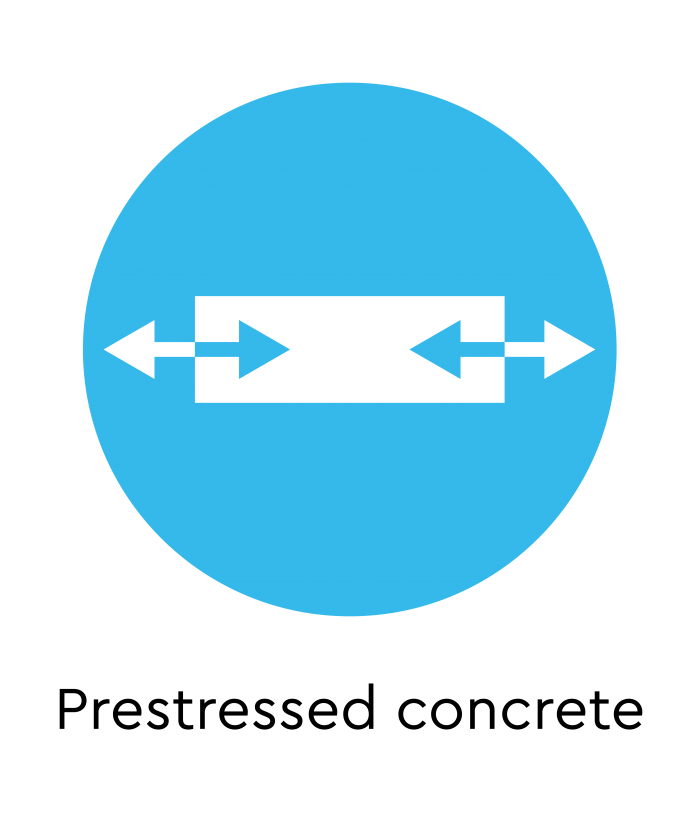
Prestressing can reduce the volume of concrete required in construction, lowering the use and transportation of materials, as well as boosting durability and service life.
Concrete is intrinsically resistant to compressive stresses, but its resistance to tension is much lower. To provide tensile capacity, reinforcement can be added. This reinforcement can be tensioned during manufacture or construction, to apply a preliminary compression to those parts of the concrete element that will be subject to tension when the element is installed and in service. This is called prestressing.
There are two sub sets of prestressed concrete: pre-tensioned or post-tensioned:
- Pre-tensioning places the reinforcing strands under tension before the concrete is cast. When the concrete is sufficiently hardened, the strands are released, putting the concrete element into compression due to the adhesion forces between concrete and strands. Pre-tensioning is typically a factory-based procedure.
- Post-tensioning refers to the strands being tensioned after the concrete has been cast and gained sufficient strength. The strands are installed in sheaths or ducts, which can either be included in the concrete element (before casting) or adjacent to it (after hardening). The strands extend between anchorage points that are fixed to the concrete; thus, the concrete element is compressed due to the pressing action of the anchorages.
Prestressing is typically used to permit longer spans and/or minimise the structural depth of beams and slabs. Post-tensioned prestressing of cores has also been used to enable structurally challenging architecture (inclined buildings) or to increase stiffness and hence improve dynamic performance. A key advantage is that prestressed concrete elements can more economically span larger distances than conventionally-reinforced concrete elements. This is of benefit in infrastructure (e.g. bridges) and in buildings with respect to beams and slabs. Further advantages of prestressed concrete include control of cracking and construction speed.
Overall, prestressing is an efficient structural form, which minimises the volume of concrete required and permits new types of structures (not affordable with ordinary reinforced concrete). This has the dual benefit of reducing the use of raw materials and reducing the number of vehicle movements to transport the materials. There may also be knock-on benefits in terms of reduced material in cladding (due to reduced height), support structure, and foundations.
A further benefit can be improved durability. Through careful specification, design and workmanship, prestressing can, through the minimisation of cracks, reduce risk of reinforcement corrosion and lengthen service life.
Header photo by Paul Mocan on Unsplash